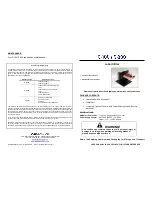
12
non-stick surface.
79. Check that the paddle is still in the loaf tin.
80. If the paddle has come off with the bread:
a) use something blunt, to avoid scratching the non-stick surfaces of the
paddle
b) use something slim, to avoid digging a hole in the bread
c) a wooden kebab, ice lolly, or cocktail stick will do nicely
d) turn the bread upside down (with the oven gloves)
e) gently ease the paddle out with the stick
81. For best results, let the bread sit for 20-30 minutes to firm up and dry out before
cutting.
82. Cutting the bread while it’s still warm and moist may make it soggy.
83. On the other hand, if you’d rather tear a bit off, smother it in butter, and eat it hot,
hold a bit of kitchen towel under your chin, to keep the drips off your clothes.
84. Don’t cut the bread till you’ve checked the paddles.
85. If the knife hits the paddles:
a) You’ll scratch the non-stick surface
b) You may damage the knife
c) If you’re really unlucky, you may even cut yourself
Continuous use
86. Before reusing the breadmaker, let it cool, and check the inside for crumbs and
other debris.
87. If you try to use it while it’s hot, you’ll get an error message on the display.
88. Unplug it, remove the loaf tin, and let the breadmaker cool down fully before
trying again.
The programs basic
For basic white bread, or recipes based on white bread dough.
French
This program makes French-type bread, with a lighter texture and crispier crust.
Recipes suitable for this program don’t normally use butter (or margarine) or milk.
French-type bread doesn’t keep very well, so it’s best eaten within hours of being
made.













































